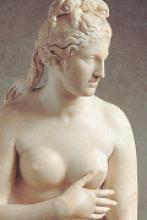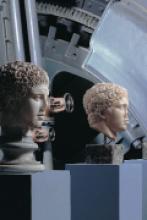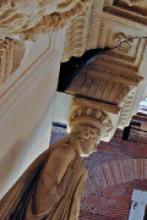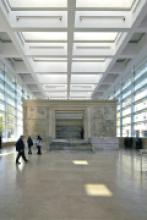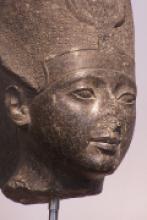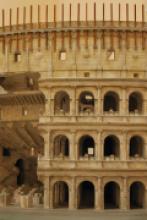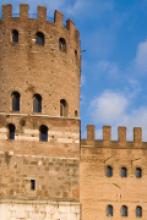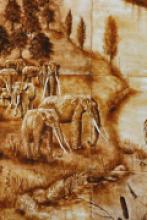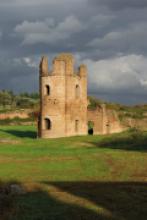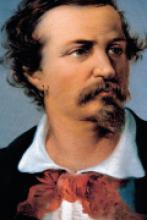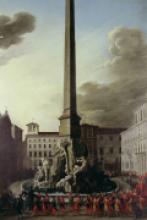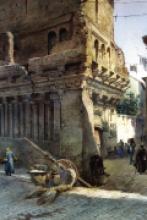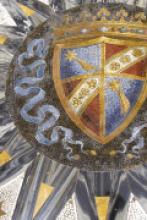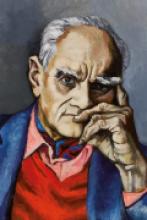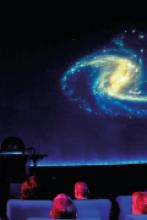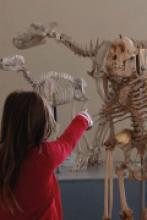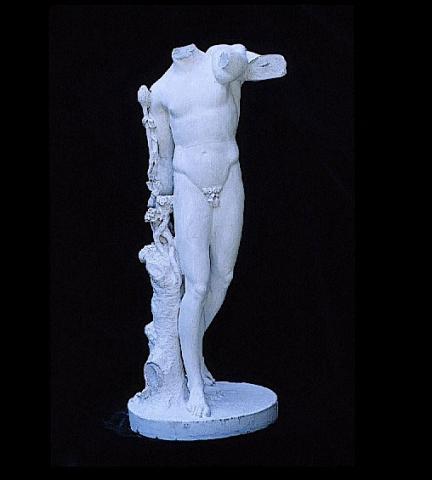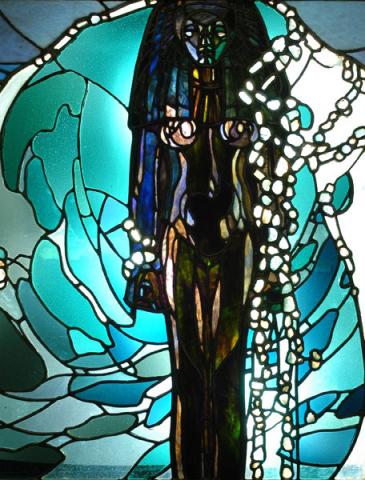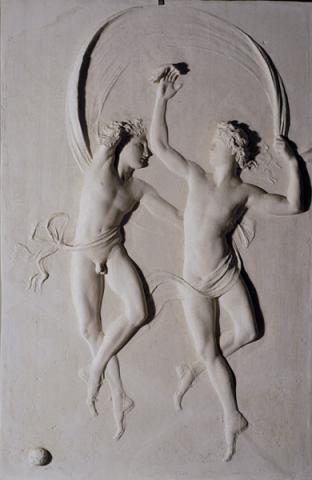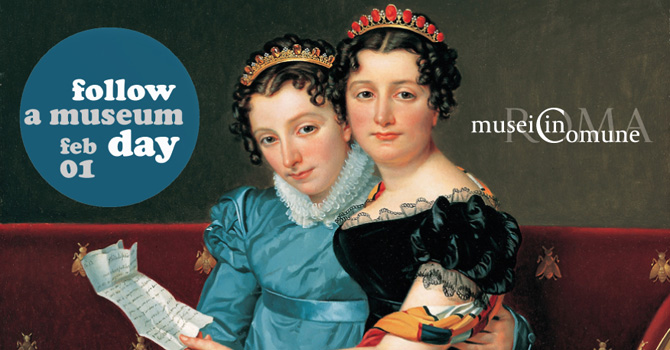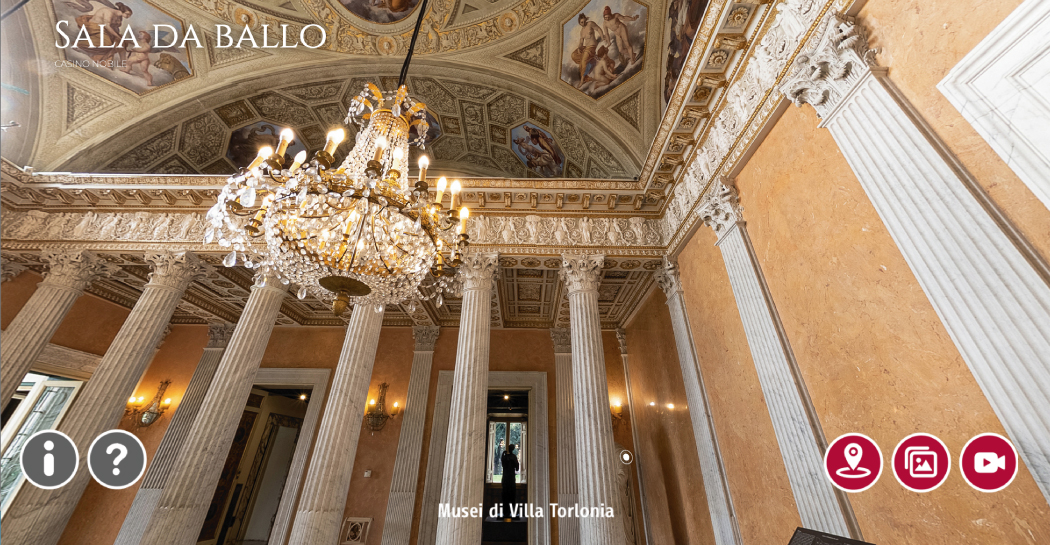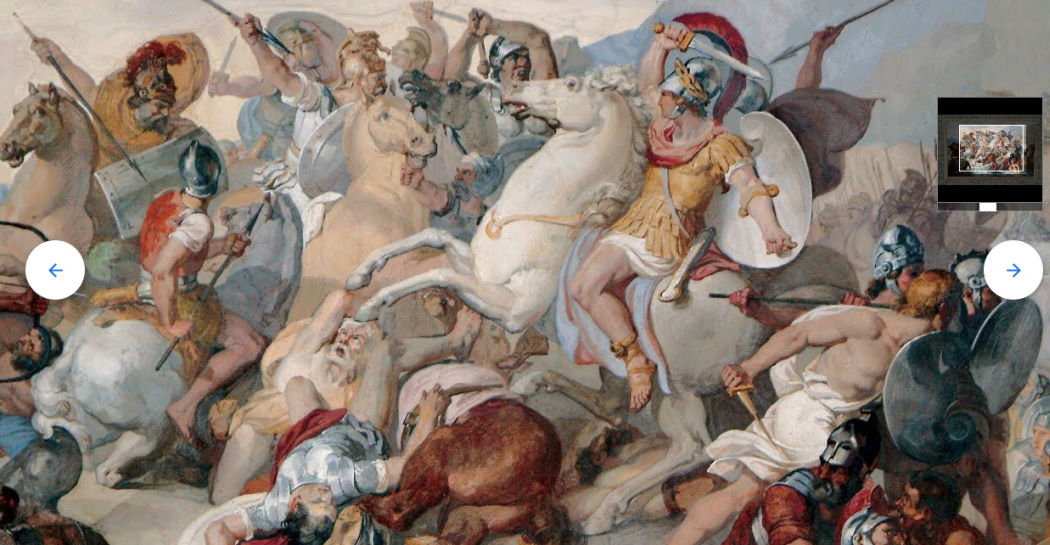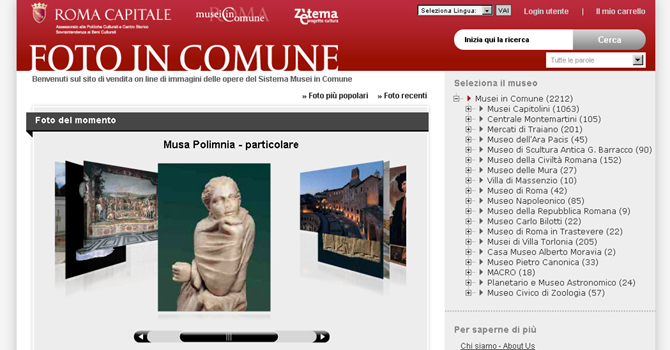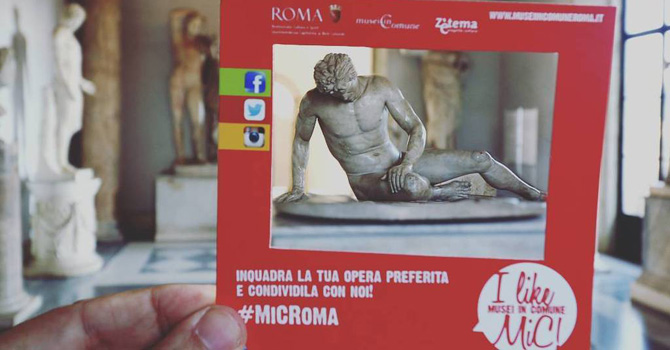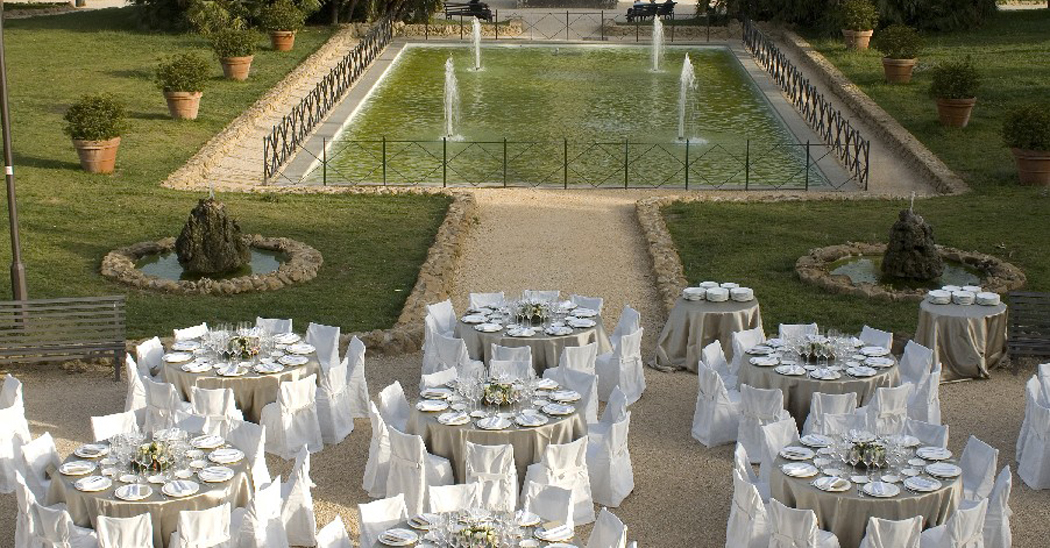Villa Torlonia
Villa Torlonia, the most recent of the villas belonging to Rome’s nobility, still retains a particular fascination due to the originality of its English-style garden (one of the few examples in the city), and to the unexpectedly large number of buildings and garden furniture in the grounds.

The historical events
Giovanni Torlonia, who obtained the title of marquis in 1797, bought the Villa Colonna (formerly Pamphilj) on the Nomentana in the same year, to sanction the acquisition of the new status. Giuseppe Valadier was commissioned to fix up the estate to ensure it matched up to the other princely villas in Rome.
Between 1802 and 1806 Valadier converted the manor building into an elegant Palace, transformed the small Abbati casino into a much more aesthetic building (the current Casino dei Principi), built the Stables and a majestic entrance (demolished with the expansion of the Nomentana). Valadier also oversaw the arrangement of the park by creating symmetrical avenues, perpendicular to each other at the intersection of which, the building sat in a central position, with the northern facade in axis with one of the entrances of the villa on the Nomentana. Numerous works of classical art, largely sculptural, were purchased to furnish the Villa.
On Giovanni's death, in 1832, his son Alessandro commissioned Giovan Battista Caretti, architect and painter, to enrich and expand the estate.
In addition to enlarging the old buildings and indulging the Prince's eclectic taste, Caretti also built some structures to decorate the park: the Falsi Ruderi, the Tempio di Saturno, the Tribuna con Fontana, an Amphitheatre, the Caffe-house, the Cappella di S. Alessandro (the latter three no longer exist).
To design and carry out the subsequent works inside the Villa, Alessandro turned to two other architects: Quintiliano Raimondi, for the Theatre and the Orangery (today more commonly called "Limonaia") and Giuseppe Jappelli, who was entrusted with the arrangement of the entire southern part of the Villa. This area was completely transformed with winding avenues, ponds and exotic plants and scattered with buildings and furnishings of fantastic taste: the Capanna Svizzera (later transformed into the Casina delle Civette - “House of the Owls”), the Greenhouse, the Tower and the Grotta Moresca, the Campo da Tornei.
The grandiose self-celebratory programme culminated in 1842 with the erection of two Obelisks in pink granite, dedicated to the memory of their parents Giovanni and Anna Maria Torlonia.
Despite the premises, Villa Torlonia was in very few cases that worldly and ostentatious meeting place for the high Roman and foreign nobility that Alexander would have wanted.
The new Torlonia heir, Giovanni, interested in reinvigorating the family name, had the Villino Medievale built, a new boundary wall, the Villino Rosso, the Villino di guardiania at the entrance to Via Spallanzani and radically transformed the Capanna Svizzera that took the current form of Casina delle Civette.
The new buildings were mostly used for housing.
In 1919 a large underground Jewish cemetery was discovered, in the north-west area of the Villa.
In 1925 the Villa was granted as a residence to Mussolini until 1943.
The presence of Mussolini did not entail substantial changes; the Duce stayed in the Palace, using the Villino Medievale and the Limonaia for the projection of films, parties and cultural meetings and the Campo da Tornei as a tennis court. Even the Park did not undergo major works, except for the war gardens at the behest of the Duce's wife. In June 1944, the entire complex was occupied by the troops of the Anglo-American command, which remained there until 1947.
In 1977 the Villa was purchased by the Municipality of Rome andsince 1978 it has been open to the public. Since the 1990s, the Municipality has undertaken a series of substantial restoration works on both the park and the buildings: first the Casina delle Civette, then the Casino dei Principi, the Villino Rosso, the Limonaia, the Villino Medievale, the Casino Nobile, part of the Scuderie Vecchie and finally the park.
In 2013, the Theatre was opened to the public then on 8 December 2021 the extraordinary Serra Moresca complex and in April 2024 Mussolini's Bunker.


